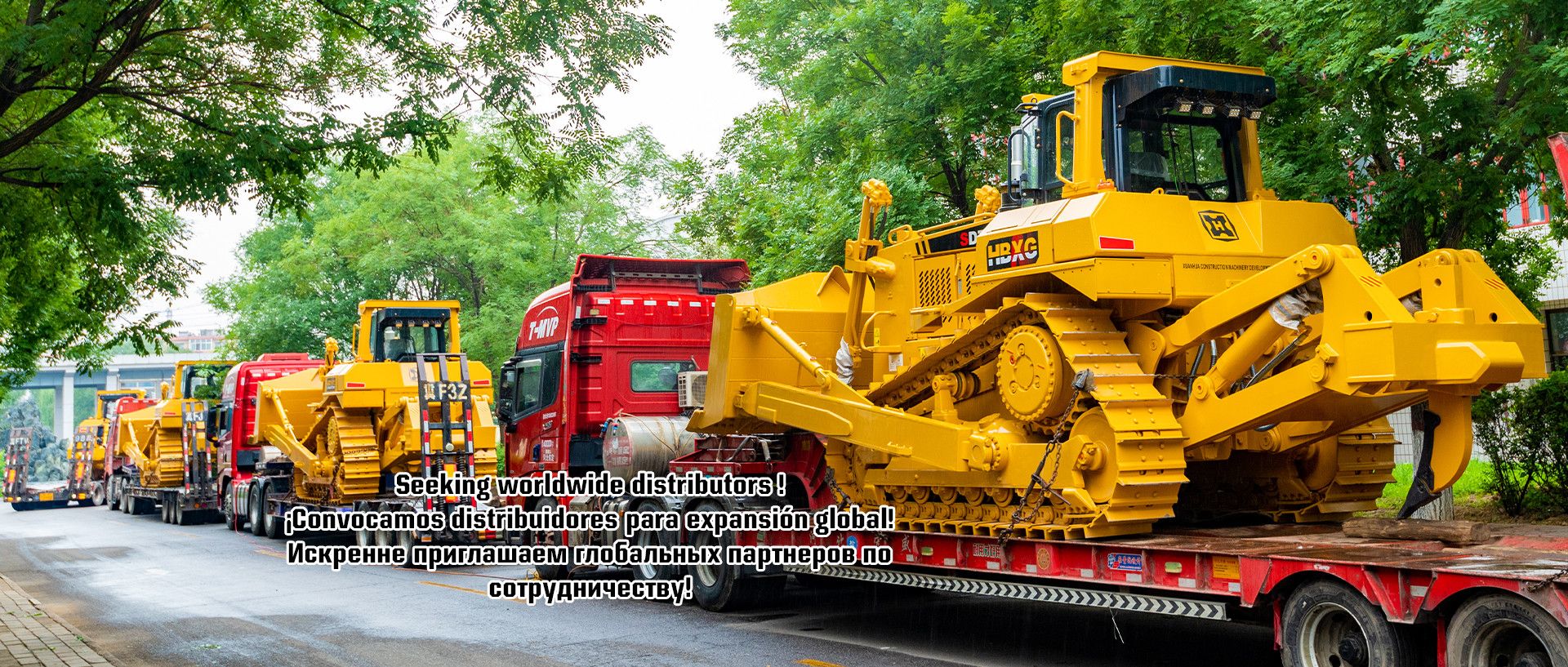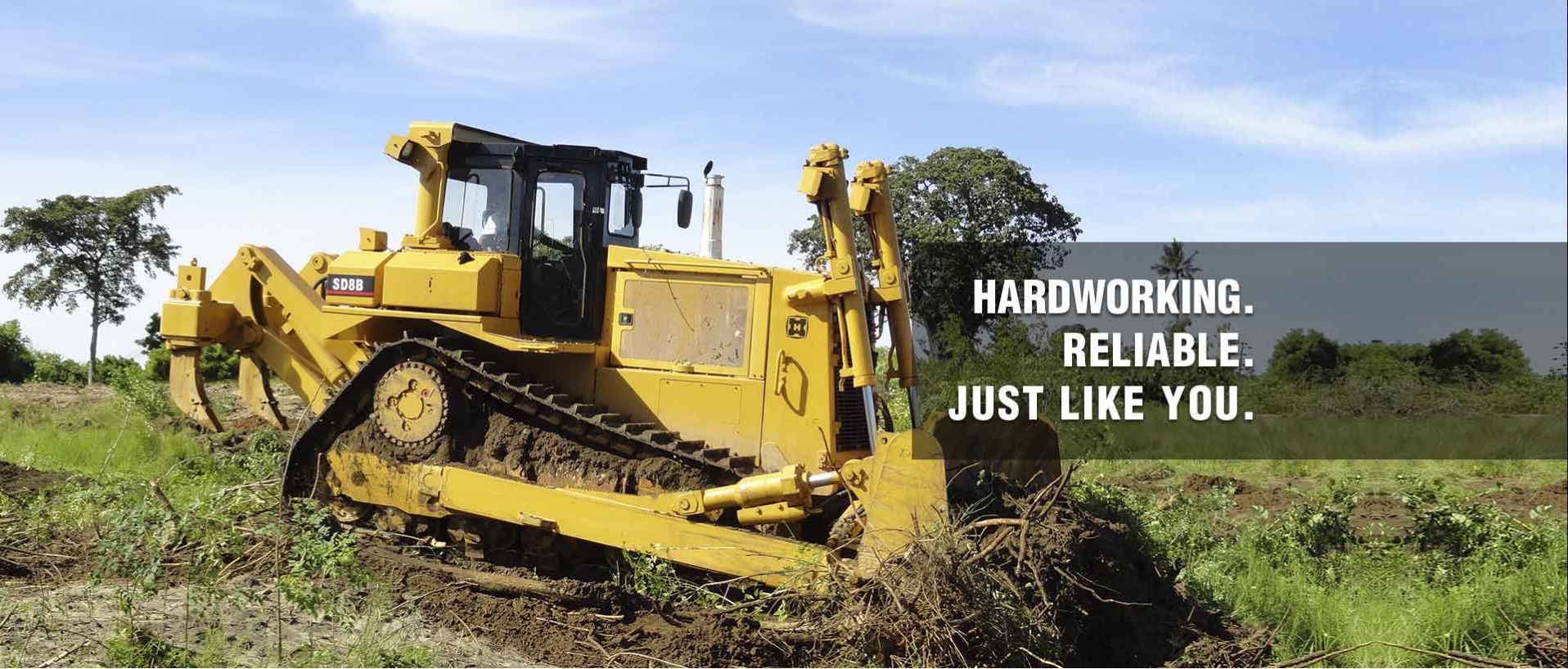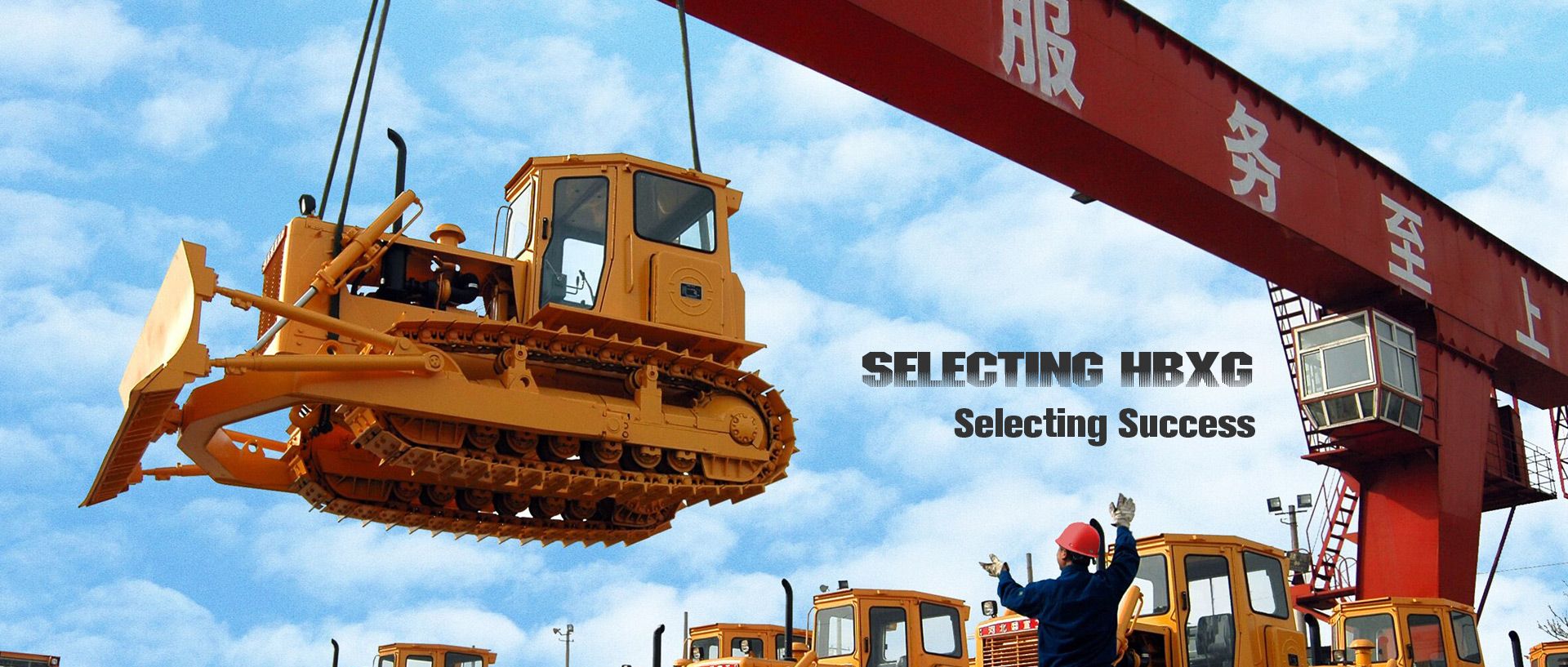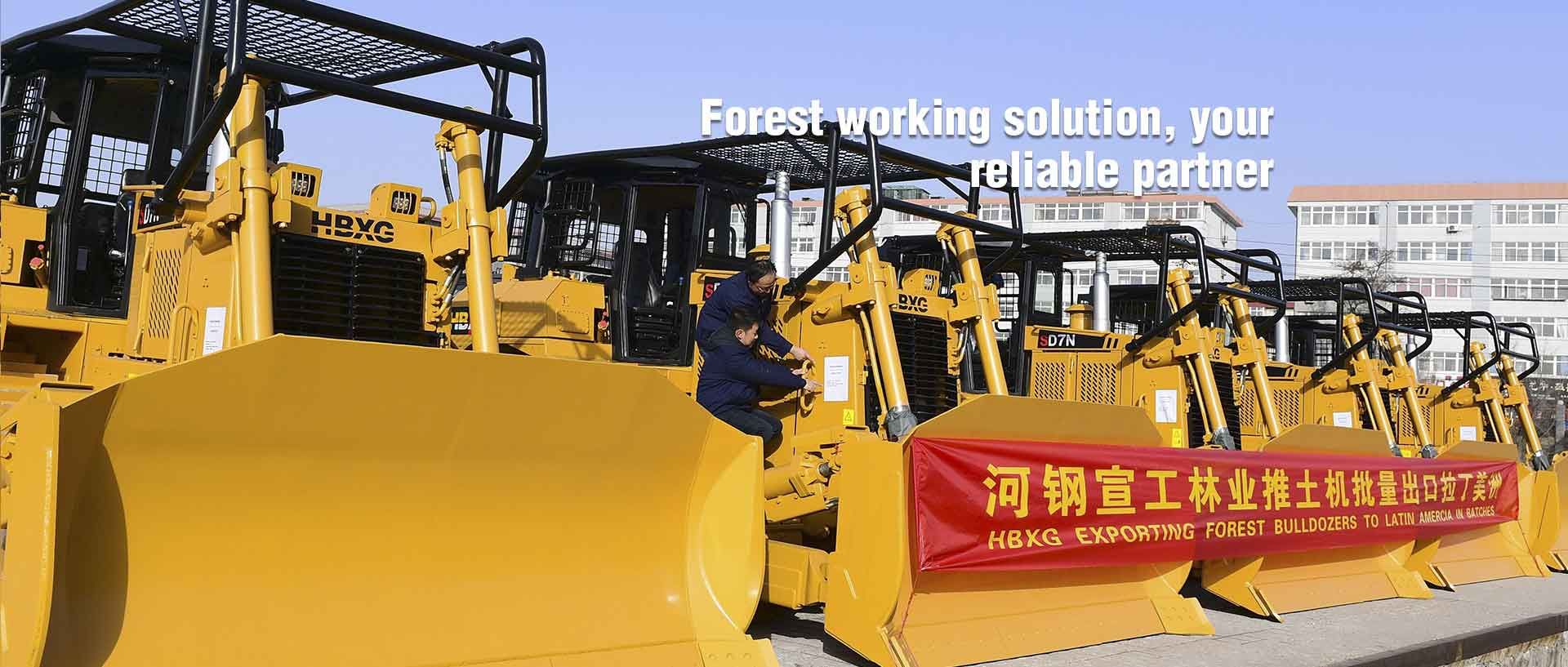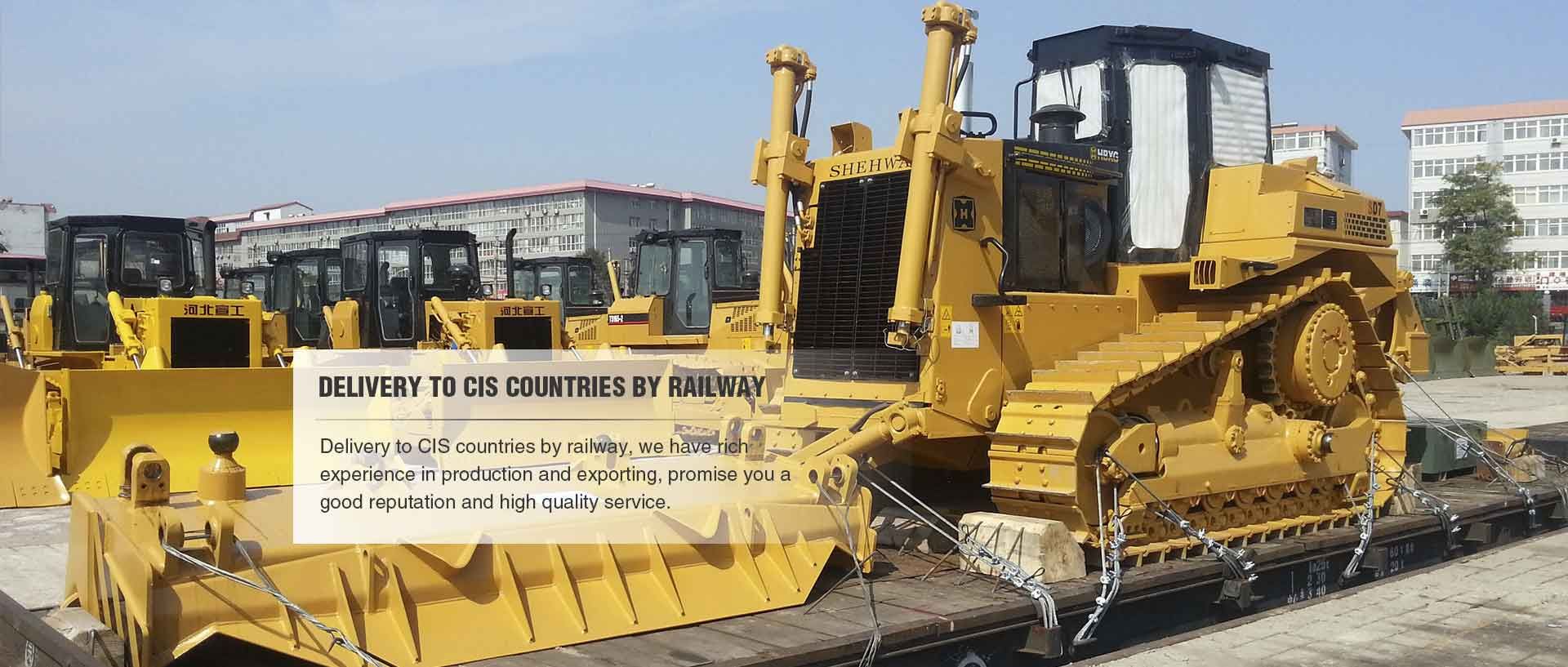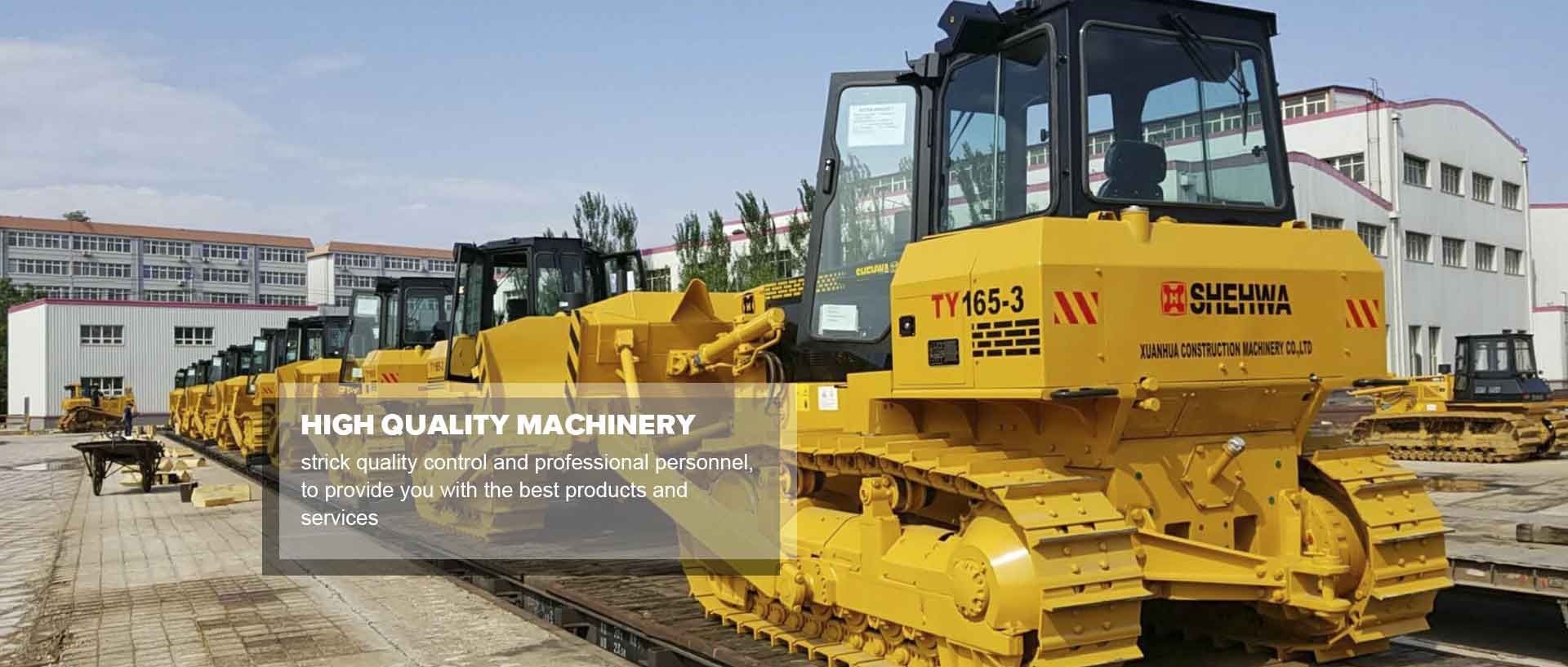Bulldozer Knowledge Broadcast: The Classification of Bulldozers
 Oct. 22, 2020
Oct. 22, 2020
Introduction of bulldozer
A Bulldozer is a self-propelled construction machine with a bulldozing device and a control mechanism installed in front of a crawler tractor or a tire tractor. It is mainly used to excavate road cuttings, construct road lifting, backfill, remove obstacles, eliminate hail, and also It can complete the shoveling and stacking operations of short-distance loose materials.
Classification of bulldozers
Bulldozing can still be divided into:
Crawler-type bulldozer: large traction force, low ground pressure, strong climbing ability, superior operation performance, is a multi-purpose model.
Wheeled bulldozer: fast driving speed, good maneuverability, short cycle time, convenient and quick transfer, and does not damage the ground, especially suitable for urban construction and road maintenance projects. However, the adhesion performance is far inferior to that of Crawler Bulldozers, and the range of use is limited.
According to the installation form of the bulldozing board, bulldozers can be divided into:
Fixed blade bulldozer: The blade of the bulldozer is fixed at a right angle to the longitudinal axis of the main engine. It is also called a shovel bulldozer. It has a simple mechanism, but it can only bulldoze in the forward direction, and has poor operational flexibility. It is only used for small and medium-sized bulldozers.
Rotary blade bulldozer: The bulldozer blade of the bulldozer can rotate at a certain angle in the horizontal plane, and can be installed at a fixed right angle or non-right angle to the longitudinal axis of the main machine. It is also called an angle shovel bulldozer. This kind of bulldozer has a wide operating range, which is convenient for moving soil and digging side ditches.
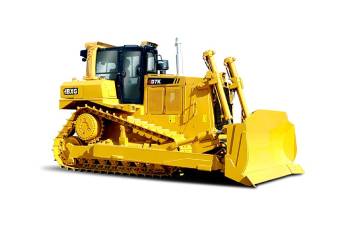
Hydraulic Bulldozer
Bulldozers can be divided into:
Mechanical transmission bulldozer: the mechanical transmission bulldozer works reliably, is simple to manufacture, has high transmission efficiency and is convenient for maintenance. However, the operation is laborious and the transmission device has poor adaptability to the load, which can easily cause the engine to stall and reduce the working efficiency. It has been seldom used in large and medium-sized bulldozers.
Hydraulic mechanical transmission bulldozer: It adopts a combined transmission device of a hydraulic torque converter and a power shift transmission, which has the ability of self-continuously variable torque and automatic adaptation to external load changes. The engine is not easy to stall, it can be loaded and shifted, the number of shifts is small, the operation is light, and the operation efficiency is high. It is the transmission mode used by modern large and medium bulldozers.
Full hydraulic drive bulldozer: driven by a hydraulic motor, the driving force is directly transmitted to the walking mechanism. Because there are no transmission components such as main separation device, transmission, drive axle, etc., it has compact structure, convenient overall layout, light weight of the whole machine, simple operation, and can realize in-situ steering. However, the full hydraulic bulldozer has high manufacturing cost, durability and reliability Poor, currently only used on medium-power bulldozers.
Electric drive bulldozer: first convert the mechanical energy output by the diesel engine into electrical energy, drive the motor through the cable, and then drive the walking device and working device. It has compact structure, convenient overall layout, flexible operation, and can realize stepless speed change and in-situ steering of the whole machine. However, the quality of the whole machine is large and the manufacturing cost is high. At present, it is only applied to a few high-power wheel bulldozers.
Bulldozers can be divided into:
Wire rope bulldozer: The blade lift is controlled by a wire rope. The blade enters the soil by its own weight and cannot be forced to cut the soil. Moreover, the mechanism has many friction parts (such as pulleys and power reamers), which is easy to wear and the operating mechanism needs to be adjusted manually . It is rarely used now.
Hydraulic Bulldozer: The blade moves under the action of a hydraulic cylinder, and it can be forced into the soil under the action of the hydraulic cylinder, or it can be taken into the soil under its own weight. It can shovel and push harder soil, with excellent working performance and good leveling quality. In addition, the blade has a light structure and is easy to operate, and the operating mechanism does not need to be adjusted manually. The lifting speed of the hydraulic blade is almost stable, especially in winter.
According to the purpose of bulldozers, it can be divided into:
Ordinary bulldozer: Good versatility, widely used in various earthwork construction operations.
Special-purpose bulldozer: It has strong specificity and is only suitable for construction operations in special environments. There are floating bulldozers, amphibious bulldozers, deepwater bulldozers, wetland bulldozers, blasting bulldozers, low-noise bulldozers, military high-speed bulldozers, etc. Floating bulldozers are used in construction operations such as beach bathing and seabed leveling. Amphibious bulldozers are mainly used in shallow water and swamp areas, and can also be used on land. Wetland bulldozers can be adapted to construction operations in marshland. Military high-speed bulldozers are mainly used for national defense construction, usually used for combat readiness construction, and can quickly remove obstacles during wartime and dig mountains to open roads.















